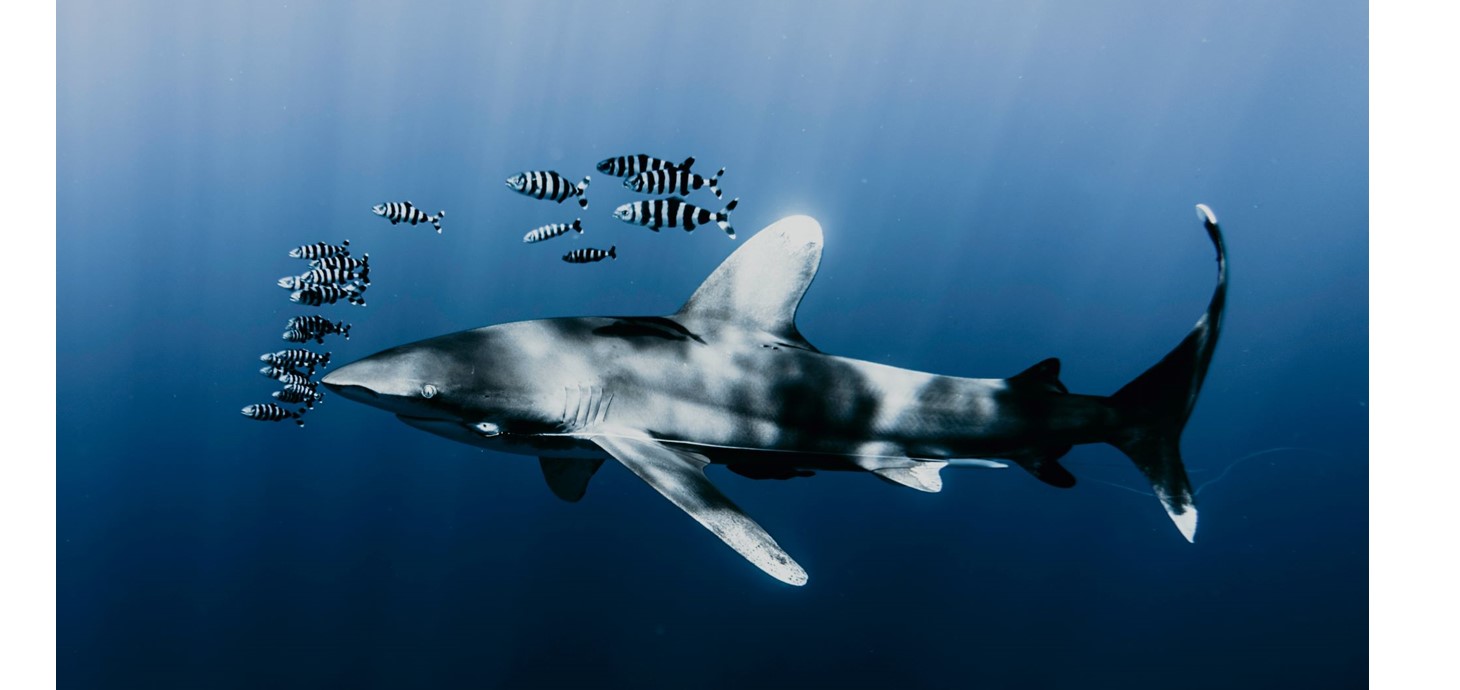
Oceanic whitetip shark swimming with a school of pilot fish in the deep blue ocean waters: Daniel Torobekov (Pexels)
A team of international scientists have tracked over 100 marine megafauna species – including sharks, whales, turtles and seals - identifying the most critical locations in our global oceans for improving marine conservation efforts, in new research involving Swansea University.
The global UN-endorsed research project, MegaMove, involves almost 400 scientists from over 50 countries. It shows where protection could be implemented specifically to conserve marine megafauna.
A group that includes some of the ocean’s best-known creatures, marine megafauna are typically top predators with critical roles in marine food webs. However, they face growing threats from humans’ environmental impact.
Current marine protection areas include only 8 per cent of the world’s total oceans. The UN High Seas Treaty - signed by 115 countries but still to be ratified - seeks to expand this to 30 per cent.
The research found that the targets of the current Treaty are a step in the right direction and will be key to assist conservation. However it also found that even the 30% target is insufficient to cover all critical areas used by threatened marine megafauna, suggesting that additional measures are also needed.
The research was led by Dr Ana Sequeira of The Australian National University (ANU) and involved Dr Nicole Esteban from the Marine Conservation and Ecology Lab in the department of biosciences at Swansea University.
Dr Nicole Esteban outlined the Swansea University role in the research:
“We contributed migratory movement data for adult hawksbill and green turtles in the Caribbean and Indian Ocean to define critical habitat used by marine megafauna, including whales, dolphins, sharks, rays, penguins, polar bears, seals, dugongs, seabirds and sea turtles.
This was a colossal effort by 400 scientists resulting in compilation of more than 12,000 tracks from more than 100 species, covering over 70% of the ocean’s surface.”
She explained why the research findings are so significant and some of the additional measures needed to improve conservation efforts:
“This latest research shows that over 75% of critical habitats used by marine megafauna is influenced by human activities, in particular fishing, shipping, pollution or warming.
The recent UN High Seas Treaty to protect 30% of the world’s oceans will leave 60% of critical habitats used by marine megafauna exposed to threats. Those areas are critical for migration, breeding, foraging and resting and it’s time for action to develop mitigation strategies - like fishing regulation and wildlife-traffic separation- to enhance protection and halt human-induced extinctions.”
Associate Professor Ana Sequeira of ANU, who led the study, is research director and founder of MegaMove, a global scientific project she launched in 2020.
Dr Ana Sequeira said:
“MegaMove brings together an international network of researchers to provide innovative research to advance the global conservation of marine megafauna.
“Our research shows that, in addition to protected areas, implementing mitigation strategies like changing fishing gear, using different lights in nets, and traffic schemes for ships will be key to alleviating current human pressure on these species.”
The research also links to UN Sustainable Development Goals, Goal 14 on water, and specifically, to Goal A of the Kunming-Montreal Global Biodiversity Framework to halt human-induced extinction of threatened species.
The research has been published in Science.
Story courtesy of Australian National University
